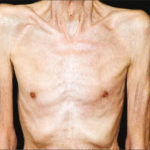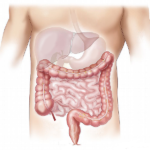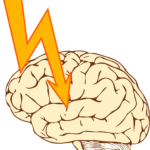Qualifying Conditions Dictionary
medical dictionary for qualifying conditions
Anorexia

Anorexia divides into different types with Anorexia and Anorexia nervosa being the most common. It’s a potential life-threatening eating disorder and can be accompanied by a severe psychological disorder.
In general:
- Anorexia is a general loss of appetite or a loss of interest in food.
- Anorexia nervosa is a serious mental illness. Patients do not necessarily lose interest in food, but intentionally restrict their food intake because of an irrational fear of being or becoming fat.
As of now, Anorexia has no single cause, but it does have several risk factors including:
- Having a tendency towards depression.
- Being overly worried about one’s weight and shape.
- Having had an anxiety disorder during childhood.
Marijuana is known to help those that suffer from Anorexia and it is classed by marijuana doctors as an effective Anorexia treatment.
Arthritis

Arthritis is very common but unfortunately still not very understood. Arthritis is a general term to describe over 100 different types of conditions that are related to joint pain or joint disease.
People of all ages have arthritis, and it is the leading cause of disability in America. Common symptoms of Arthritis include swelling, pain, stiffness and decreased the range of motion. In 2000, researchers found that marijuana contains amazing anti-inflammatory compounds as well as natural analgesics making it a very beneficial arthritis treatment.
Cachexia (wasting)

Cachexia is a condition which denotes the excessive loss of weight. It happens due to depletion of adipose tissue and muscle mass in individuals who are not trying to lose weight.
It is also known as “wasting syndrome.” It is known for causing excessive muscle wasting, weakness, fatigue, and loss of appetite in people.
The word “cachexia” originates from two Greek terms “Kakos” which means “bad” and “Hexis” which means “condition.”
Chronic pain

About 100 million Americans suffer from chronic pain on a daily basis. Chronic pain is defined as pain that lasts longer than six months. The most common sources of pain stem from headaches, joint pain, pain from injury, and backaches. Other kinds of chronic pain include tendinitis, sinus pain, carpal tunnel syndrome, and pain affecting specific parts of the body, such as the shoulders, pelvis, and neck.
Studies in chronic pain of both neuropathic and inflammatory origin have found marijuana to be an effective treatment. Cannabinoids in the plant are known to release endogenous opioids which moderate pain. While some studies have suggested that cannabis is no more effective than codeine in controlling pain, the side effects of marijuana versus narcotic pain relievers show that marijuana is a safer option to use.
Cancer

Cancer is classed as a group of diseases characterized by out-of-control cell growth. As of now, there are over 100 different types of cancer types, and each is classified by the type of cell that it affects. There are also various different cancer treatments including marijuana.
Cancer alters cells and causes lumps or masses of tissue to form. These are called tumors. If untreated, tumors can grow and interfere with the digestive, nervous, and circulatory systems. They may even release hormones that alter body function.
Research in mice and rats have proven that cannabinoids may inhibit tumor growth by causing cell death, blocking cell growth, and blocking the development of blood vessels needed by tumors to grow. Other research on animals has shown that cannabinoids may be able to kill cancer cells and is now classed as an effective cancer treatment
Depression

Depression is a serious and common medical illness that affects how you feel. It negatively affects the way you think and how you act.
Fortunately, it is also treatable, and one of those depression treatments is marijuana. Unlike antidepressant medications that are associated with a broad range of serious side-effects, marijuana is classed as a more natural alternative solution.
Insomnia

Insomnia is a sleep disorder that affects millions of people across the globe. It is normally divided into three types:
- Transient Insomnia – Symptoms last from a few days to a couple of weeks.
- Acute Insomnia – Symptoms persist for several weeks.
- Chronic Insomnia – Can last for months, and sometimes years.
Fibromyalgia

Fibromyalgia is a disorder that causes muscle pain and fatigue. People with fibromyalgia have “tender points” on the body. Tender points are specific places on the neck, shoulders, back, hips, arms, and legs. These points hurt when pressure is put on them.
People with fibromyalgia may also have other symptoms, such as
- Trouble sleeping
- Morning stiffness
- Headaches
- Painful menstrual periods
- Tingling or numbness in hands and feet
- Problems with thinking and memory (sometimes called “fibro fog”.
Glaucoma

Glaucoma is a disease that affects and damages your eye’s optic nerve. It tends to happen when fluid accumulates in the front part of your eye.
It is the leading cause of blindness, for people over 60 years old, forcing them to have eye surgery. More current research has shown that there are cannabinoid receptors within the eye meaning that the endocannabinoid system may have dictation over the aqueous humoural outflow and production.
This means that specific strains can reduce the pressure inside the eye and may slow the progression of the disease.
Alzheimer's disease

Alzheimer’s disease (AD) is the most common form of dementia among older people. Dementia is a brain disorder that seriously affects a person’s ability to carry out daily activities.
AD begins slowly. It first involves the parts of the brain that control thought, memory and language. People with AD may have trouble remembering things that happened recently or names of people they know. A related problem, mild cognitive impairment (MCI), causes more memory problems than normal for people of the same age. Many, but not all, people with MCI will develop AD.
In AD, over time, symptoms get worse. People may not recognize family members. They may have trouble speaking, reading or writing. They may forget how to brush their teeth or comb their hair. Later on, they may become anxious or aggressive, or wander away from home. Eventually, they need total care. This can cause great stress for family members who must care for them.
Chron's disease

Crohn’s disease causes inflammation of the digestive system. It is one of a group of diseases called inflammatory bowel disease. Crohn’s can affect any area from the mouth to the anus. It often affects the lower part of the small intestine called the ileum.
The cause of Crohn’s disease is unknown. It may be due to an abnormal reaction by the body’s immune system. It also seems to run in some families. It most commonly starts between the ages of 13 and 30.
The most common symptoms are pain in the abdomen and diarrhea. Other symptoms include
- Bleeding from the rectum
- Weight loss
- Fever
Your doctor will diagnose Crohn’s disease with a physical exam, lab tests, imaging tests, and a colonoscopy.
Migraines

If you suffer from migraine headaches, you’re not alone. About 12 percent of the U.S. population gets them. Migraines are recurring attacks of moderate to severe pain. The pain is throbbing or pulsing, and is often on one side of the head. During migraines, people are very sensitive to light and sound. They may also become nauseated and vomit.
Migraine is three times more common in women than in men. Some people can tell when they are about to have a migraine because they see flashing lights or zigzag lines or they temporarily lose their vision.
Many things can trigger a migraine. These include
- Anxiety
- Stress
- Lack of food or sleep
- Exposure to light
- Hormonal changes (in women)
Parkinson's disease

Parkinson’s disease (PD) is a type of movement disorder. It happens when nerve cells in the brain don’t produce enough of a brain chemical called dopamine. Sometimes it is genetic, but most cases do not seem to run in families. Exposure to chemicals in the environment might play a role.
Symptoms begin gradually, often on one side of the body. Later they affect both sides. They include
- Trembling of hands, arms, legs, jaw and face
- Stiffness of the arms, legs and trunk
- Slowness of movement
- Poor balance and coordination
As symptoms get worse, people with the disease may have trouble walking, talking, or doing simple tasks. They may also have problems such as depression, sleep problems, or trouble chewing, swallowing, or speaking.
ALS

Amyotrophic Lateral Sclerosis, or ALS, is a disease of the nervous system that attacks the nerve cells (neurons) in the brain and spinal cord. These neurons transmit messages from the brain and spinal cord to the voluntary muscles, which you can control, such as those in the arms and legs. At first, it causes mild muscle problems. Some people notice problems to:
- Walk or run
- to write
- Talk
Hepatitis C

Your liver is the largest organ inside your body. It helps your body digest food, store energy, and remove poisons. Hepatitis is an inflammation of the liver. One type, hepatitis C, is caused by the hepatitis C virus (HCV). It usually spreads through contact with infected blood. It can also spread through sex with an infected person and from mother to baby during childbirth.
Most people who are infected with hepatitis C don’t have any symptoms for years. If you do get symptoms, you may feel as if you have the flu. You may also have jaundice, a yellowing of skin and eyes, dark-colored urine, and pale bowel movements. A blood test can tell if you have it. Usually, hepatitis C does not get better by itself. The infection can last a lifetime and may lead to cirrhosis(scarring of the liver) or liver cancer. Medicines sometimes help, but side effects can be a problem. Serious cases may need a liver transplant.
Epilepsy / Seizures

Epilepsy is a group of neurological disorders characterized by epileptic seizures. Epileptic seizures are episodes that can last from only a few seconds, to long episodes that are characterized by vigorous shaking.
Marijuana has anti-convulsant properties thanks to its Cannabidiol (CBD), a compound found at higher levels in some strains of marijuana. This makes cannabis an excellent treatment for epilepsy as it helps to control the spasms associated with Epilepsy.
The purpose of this article is to provide a medical definition for the qualifying conditions for a medical cannabis license recommendation in Puerto Rico.

